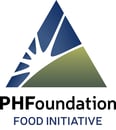Biblio Bistro: Salmon with Citrus Salsa - a Light, Unique Fish Recipe
September 27, 2021 | By Meghan Jaszczak
This episode of Biblio Bistro features Salmon with Citrus Salsa which highlights fresh plum tomatoes and basil. Tomatoes are usually available at Copper Country Farmers Markets in late-summer through early fall. Basil is usually available at Farmers Markets in mid-summer. Fresh fish can also be found at our local farmers markets or you can search here.
About Salmon with Citrus Salsa
This dish is a light and unique way to try eating fish! The citrusy and bright fruit salsa livens up the salmon (or other fish if you prefer) and creates a tropical vibe. To learn how to cut a fresh pineapple, click here (pineapple is the first 2 minutes).
In total, this recipe was only $20.73 to prepare, or $5.18 per serving!
Fish Facts from Dr. Lauren Jescovitch
This Biblio Bistro episode was the first one to feature a guest! Lauren Jescovitch, Ph.D, works with Michigan State University Extension and Michigan Sea Grant to serve as an educator in western Upper Peninsula. Her focus areas include aquaculture, commercial fisheries, and Tribal partnerships.
- You can generally swap out whatever type of fish you prefer in recipes. Fish like salmon tend to have a bolder flavor, so if trying fish for the first-time white fish or trout may be a good starting point.
- ~80% of our seafood is imported, so often when you buy fresh fish from the grocery stores, it is not from our region or even from the US.
- Fish is considered to be one of the most sustainable proteins when compared to beef, chicken, or pork.
- To catch your own fish, you’d need a state license, bait, tackle, fishing pole, fishing string and hooks, and DNR map .
- For farm-raised vs wild-caught fish, the nutritional profile is typically pretty similar. Generally, the most important thing is that the fishery is following appropriate quality and safety measures.
Healthy Eating Tips from Dietitian Meghan
- Tomato – Tomatoes are abundant with vitamins and minerals that are linked with heart health.
- Pineapple – This tropical fruit contains enzymes that help with digestion. For those that have a slower digestive system, eating pineapple is a natural way to help keep things moving in the gut!
- Trout – Most fish, trout included, are considered to be heart healthy proteins. Fish is generally a lean (low-fat) protein option, but even those that are fattier contain healthful fats, which are linked to improved heart and brain health.
Cooking Tips from Chef Michael
- Fish should have an internal temp of 145 degrees F before eating.
- You can also check to see if the fish is fully cooked with the fork test. It should easily flake and have a slight firmness.
- If you don’t like to eat the skin, you can lift the spatula underneath to separate the flesh from the skin. The skin is edible for those that enjoy eating it.
Farmers Markets in Michigan’s Keweenaw Peninsula
 From Calumet to L’Anse there are several great farmers markets in Michigan’s Keweenaw Peninsula. Our friends at the Western U.P. Food Systems Collaborative have put together a great resource on this that gets updated regularly. Check out a full list of farmers markets here, wupfoodsystems.com/farmers-markets.
From Calumet to L’Anse there are several great farmers markets in Michigan’s Keweenaw Peninsula. Our friends at the Western U.P. Food Systems Collaborative have put together a great resource on this that gets updated regularly. Check out a full list of farmers markets here, wupfoodsystems.com/farmers-markets.
About Biblio Bistro
 The Biblio Bistro series strives to show that healthy cooking doesn’t have to be boring or laborious. Our goal is that by watching this series, participants can feel more confident and curious in the kitchen, all the while increasing fruit and veggie intake and supporting the local food system! Learn more about Biblio Bistro at pldl.org/biblio-bistro.
The Biblio Bistro series strives to show that healthy cooking doesn’t have to be boring or laborious. Our goal is that by watching this series, participants can feel more confident and curious in the kitchen, all the while increasing fruit and veggie intake and supporting the local food system! Learn more about Biblio Bistro at pldl.org/biblio-bistro.
About Portage Health Foundation’s Food Initiative
 Portage Health Foundation is passionate about making a difference when it comes to food in Baraga, Houghton, Keweenaw and Ontonagon counties. PHF’s Food Initiative is two-fold. First, the food initiative aims to improve access to locally grown and healthful foods within our community. Second, it provides educational resources and tools to promote sustainable changes to eating and lifestyle habits for all. Learn more about this initiative at phfgive.org/food.
Portage Health Foundation is passionate about making a difference when it comes to food in Baraga, Houghton, Keweenaw and Ontonagon counties. PHF’s Food Initiative is two-fold. First, the food initiative aims to improve access to locally grown and healthful foods within our community. Second, it provides educational resources and tools to promote sustainable changes to eating and lifestyle habits for all. Learn more about this initiative at phfgive.org/food.
